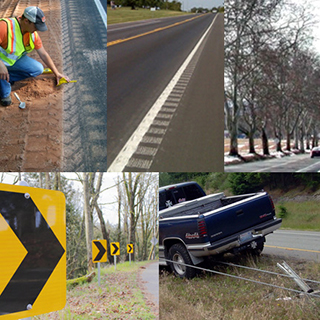Describe the roadway safety situation or state before the new practice was implemented. What was the safety issue, problem, or gap?
Kansas recognized a gap between the data needed to identify safety projects that qualified for High Risk Rural Road funding and the data available. The limited data they did have pointed to a need for a program that reduced roadway departures in order to decrease collisions with fixed objects, which is the most common rural fatality crash type in the State.
What were the key challenges that needed to be addressed before the new practice could be implemented?
Without detailed data, Kansas was having difficulty identifying projects that qualified for High Risk Rural Road project funding. Statewide data revealed crash problems, but a lack of site-specific rural road data, along with the randomness of crashes on county roads, restricted the agency’s ability to complete data-driven analysis for specific locations.
Describe the new practice.

Kansas Department of Transportation (KDOT) staff realized a systemic safety approach would enable them to use High Risk Rural Road funding to apply low-cost treatments systemically on county roads that shared common crash risk factors, effectively improving safety in those locations.
KDOT has funded widespread installation of low-cost countermeasures such as the SafetyEdgeSM, pavement markings, rumble strips, tree removal, enhanced signing, and improvements to roadside barriers such as culvert headwalls and guardrails.
What technical and/or institutional changes resulted from the new practice?
The new approach became the foundation for the way KDOT identifies and programs projects to be treated through High Risk Rural Road funding.
Institutionally, teamwork had to become a priority for this practice to succeed. The process of identifying sites for treatment includes input from and coordination with local agencies, the Local Technical Assistance Program, the FHWA Division Office Safety Engineer, a metropolitan planning organization, the Kansas association of counties, as well as county police and emergency response representatives.
What benefits were realized as a result of the practice?
Focusing its high risk rural road funding through a systemic approach has allowed Kansas to invest in extensive low cost countermeasures since 2011.
KDOT considers the ever-increasing popularity of the program among the counties to be a sign that the program is successful. In addition, local agencies have expressed that this approach is adding value to their system by increasing safety.
Contact
Steven Buckley
Kansas State Bureau of Transportation Safety & Technology
Steven.Buckley@ks.gov
